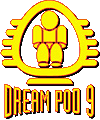![[Starship Modeler's eighth on-line modeling contest: Departures]](DeparturesBanner.jpg) |
Contest Rules Our Sponsors |
ISRO/CNSA Lunar Mission |
 |
|
|
|
Scale: 1/96 Year of time divergence: 1962 In November of 1962 China invaded Indian territory in the Himalayas. This ultimately led to a minor but humiliating defeat for Indian forces and was the main reason why the Indian government developed the atomic bomb. If things had gone differently in and no invasion had taken place then China and India would be well placed to be allies and partners in Asia. I have designed and built a joint Indian Space Research Organization / Chinese National Space Agency Lunar mission. Both nations would be able to afford a lunar mission by 2003 because due to lack of mutual antagonism both of the nations would have smaller defense budgets and be able to spend more on their Space programs. Here is how it would work: |
|
|
The Model This is the first of two entries depicting this mission. The model is almost 100% spare parts. The Moon Goddess spacecraft is shirt button, pill, leftover Shuttle and Chinook decals + homemade decals (I love making my own decals on computers but they only work on white surfaces.), bits of space toys, spare parts from old kits, big Tobasco bottle tops, 25 cent gift dispenser container, pill box, pill cup and carnival beads. The engine nozzle is from a MK-2c Hurricane nose. Sheet styrene also played a major role, especially in the solar panels. I painted with acrylic art paints a coat of satin black and white. The Lunar Landing Module is pretty much 100% spare parts also. Stem wire form the railings and landing gear. It also is made up of more gold carnaval beads, homemade and leftover decals (mostly made on my compuper), bits and bobs from space toys and some more sheet styrene. The paint job is of art paints again. Image: Lander and Moon Goddess, before landing Image: LLM, docked Image: From above and behind Image: 'Front' view |
||
This page was last updated 13 May 2003


